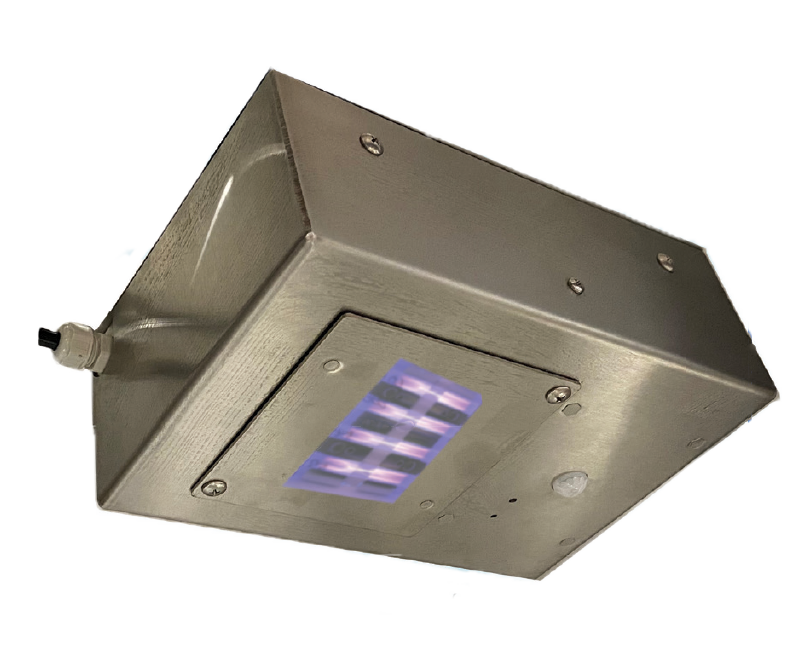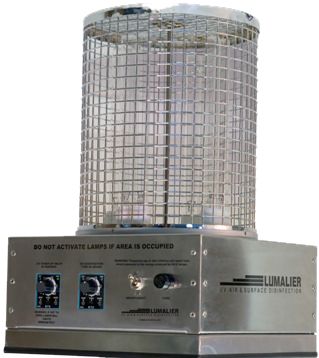Releasing the Power of UV Surface Disinfection: Securing Versus Dangerous Microorganisms
Releasing the Power of UV Surface Disinfection: Securing Versus Dangerous Microorganisms
Blog Article
UV Disinfection: The Cutting-Edge Modern Technology Changing Hygiene Practices
In the world of cleanliness techniques, one modern technology has emerged as a game-changer: UV disinfection. From healthcare setups to food processing, UV sanitation is making its mark in various sectors.
Exactly How UV Sanitation Works
UV sanitation functions by using ultraviolet light to destroy or inactivate microorganisms, supplying a highly efficient and chemical-free approach of sanitation. This innovation uses the power of short-wavelength UV-C light, which can damaging the DNA and RNA of microbes, thus providing them unable to trigger and duplicate injury.
The process starts with the installation of UV disinfection systems, which include UV lights that send out UV-C light. These lamps are strategically positioned in locations where microbial contamination is a problem, such as water treatment plants, medical facilities, laboratories, and food processing facilities.
When microbes are exposed to UV-C light, the photons penetrate their cell wall surfaces and reach the DNA and RNA inside. The high-energy UV-C photons disrupt the genetic material by developing bonds in between adjacent nucleotides, resulting in the development of thymine dimers. These dimers prevent the microorganisms from duplicating, rendering them safe.
UV sanitation is very efficient against a wide variety of bacteria, consisting of parasites, germs, and infections. It is particularly effective versus waterborne microorganisms like E. coli, Giardia, and Cryptosporidium. UV sanitation is a chemical-free method, eliminating the demand for potentially hazardous disinfectants and lowering the threat of harmful disinfection spin-offs.
Benefits of UV Disinfection
UV sanitation offers various advantages in the area of sanitation, making it a very chosen approach for effectively getting rid of dangerous bacteria. One of the vital benefits of UV disinfection is its ability to provide a chemical-free service. Unlike typical sanitation methods that count on chemicals, UV sanitation uses ultraviolet light to damage the DNA of microorganisms, providing them unable to recreate and cause infections. This not just gets rid of the demand for potentially damaging chemicals but also minimizes the threat of chemical deposit on surface areas.

UV disinfection is likewise extremely flexible in its applications. It can be utilized in different setups, including health centers, schools, food processing facilities, and water therapy plants. UV disinfection systems can be easily incorporated into existing hygiene practices, offering an added layer of protection versus infectious illness.
Along with its performance and convenience, UV disinfection is likewise eco-friendly. It does not generate any dangerous by-products or residues, making it a lasting and risk-free technique for hygiene - uv surface disinfection. Moreover, UV disinfection calls for very little upkeep and has a long life-span, leading to expense savings over time.
UV Sanitation in Health Care Setups
In health care setups, UV sanitation has actually arised as a groundbreaking technique for efficiently eliminating dangerous bacteria. UV sanitation functions by discharging ultraviolet light at a particular wavelength that is deadly to bacteria, viruses, and various other microbes.
To start with, UV sanitation is a non-chemical approach, making it an eco-friendly option contrasted to standard sanitation approaches that often involve using rough chemicals. Using UV light eliminates the requirement for chemical anti-bacterials, lowering the risk of damaging residue or chemical direct exposure to both individuals and healthcare workers.
Additionally, UV disinfection is very effective in killing a vast array of bacteria, consisting of drug-resistant microorganisms such as MRSA and C. difficile. It offers a constant and reliable disinfection procedure, ensuring that all surfaces and equipment are thoroughly decontaminated, also in hard-to-reach locations.

UV Sanitation in Food Processing
The application of UV sanitation prolongs beyond medical care settings and locates considerable value in the realm of food handling. uv surface disinfection. UV disinfection modern technology is coming to be progressively popular in the food market as a result of its ability to properly get rid of dangerous pathogens and improve food safety and security
Among the main benefits of UV sanitation in food processing is its capability to target a broad array of microbes, consisting of infections, bacteria, and molds. By utilizing UV light at certain wavelengths, it is feasible to interrupt the DNA and RNA of these microorganisms, making them unable to create or duplicate injury. This technology can be put on different phases of the food handling chain, consisting of surface area disinfection, devices sterilization, and water treatment.
UV disinfection provides a chemical-free and non-thermal approach of sanitizing food products. Unlike standard sanitation methods that rely on chemicals or heat, UV innovation does not leave any kind of deposit or modify the preference, structure, or dietary worth of the food. This makes it a perfect service for markets that require stringent adherence to quality requirements.
Moreover, UV disinfection systems are simple to run and mount, needing minimal upkeep. They can be integrated right into existing handling lines without creating considerable interruptions to the production procedure. Additionally, UV systems have a quick treatment time, permitting continuous processing and decreasing downtime.
The Future of UV Disinfection

One area where UV disinfection is anticipated to make considerable improvements is in the area of healthcare. With the surge of antibiotic-resistant microorganisms and the demand for a lot more reliable sanitation techniques, UV light has the prospective to play a critical duty in lowering healthcare-associated infections. UV sanitation systems can be made use of to sanitize surface areas, tools, and even the air in medical care centers, helping to stop the spread of damaging virus and boost individual security.
Another industry that can profit from innovations in UV disinfection innovation is the food industry. UV light has actually already confirmed to be an efficient technique for sanitizing food and lowering the danger of foodborne diseases. As technology boosts, we can expect to see much more cost-efficient and effective UV disinfection systems being carried out in food handling plants, making sure that the food we take in is risk-free and devoid of unsafe bacteria.
Conclusion
In conclusion, UV sanitation is a cutting-edge innovation that is transforming sanitation techniques in medical care setups and food handling. By utilizing UV light to eliminate or shut off bacteria, it uses many benefits such as safety, efficiency, and efficiency. With recurring improvements in this area, UV disinfection holds fantastic next possible for the future of hygiene, giving Look At This a dependable and sustainable remedy for maintaining tidy and hygienic atmospheres.
UV sanitation is a chemical-free method, getting rid of the demand for possibly hazardous anti-bacterials and minimizing the danger of damaging disinfection byproducts.
Unlike conventional sanitation techniques that depend on chemicals, UV sanitation utilizes ultraviolet light to ruin the DNA of microorganisms, making them incapable to recreate and trigger infections. Unlike traditional sanitation techniques that rely on chemicals or warm, UV modern technology does not leave any type of deposit or modify the preference, structure, or dietary worth of the food. As technology boosts, we can anticipate to see a lot more reliable and affordable UV sanitation systems being executed in food processing plants, making sure that the food we eat is secure and totally free from hazardous microorganisms.
In verdict, UV sanitation is an advanced innovation that is transforming hygiene methods in healthcare settings and food processing.
Report this page